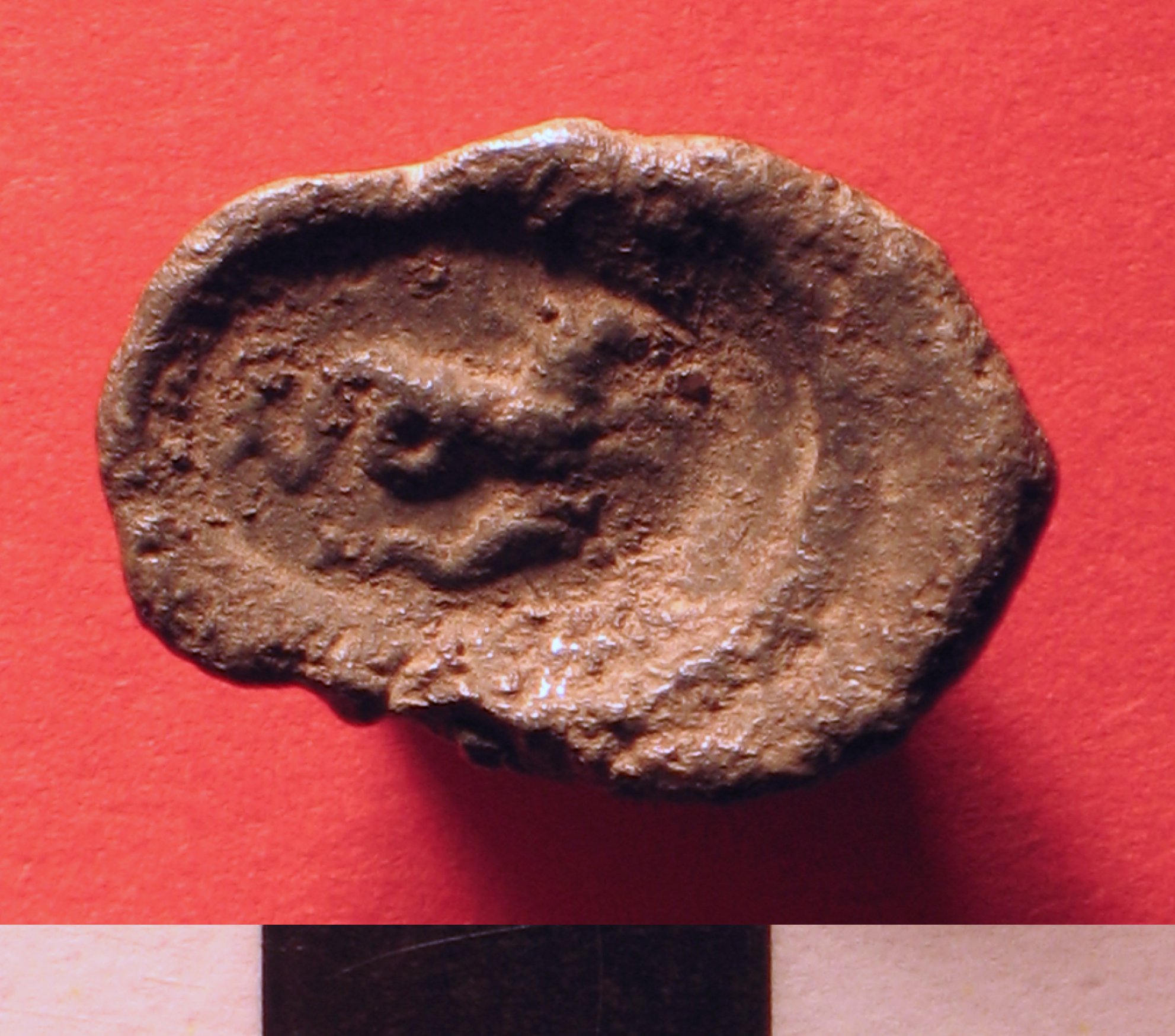Lead sealing activity
This activity is aimed at schools & families to help discover the wonder of Roman objects in our collection.
Lead sealing

Lead sealings were introduced during the Roman age and used to seal the contents of a parcel or package securely. This lead sealing has been impressed with an intaglio, a design pressed or engraved into the material, showing a small dolphin below a hippocamp, a mythical creature that was a genuine sea-horse, being half horse and half fish. It was believed that sea gods, such as Neptune, rode these creatures attached to his chariot.
Prior to the invention of lead sealings, only wax or clay was used, but this material was fragile and could be broken easily. The Romans would use clay seals for sealing personal documents such as letters. These seals were made of small pieces of clay, moulded around a string and stamped with an impression. This kind of seal is called a 'bulla'. Archaeologist have been able to find examples of these as a result of fires, where the original document is lost but the clay bulla is hardened because of the heat and survives.
The Romans also used Signet rings to make sealings. The ring could either have a design etched or stamped directly onto it, called an intaglio, or carved in relief onto a semi-precious stone, called a cameo. The ring would then be used to stamp the impression.
This type of ring was used as a confirmation of identity and often pressed into wax on a document to literally make the wearer's mark. Roman Emperors and other important figures would have worn and used these. Signet rings were instantly recognisable as symbols of power or importance.
Activities
Take a good look at this lead sealing
What do you see, notice and wonder about it? What type of person might have used this seal? What do you think was inside the package that bore this seal and why would it need such a strong seal to protect the contents? Do you think the design had anything to do with what was inside or who sent it? Do you think it had anything to do with Arbeia?
Now it’s your turn.
Design and make your own stamp and sealing. Imagine you are an Emperor or other famous or powerful person. Design a picture that represents who you are. Think about your likes, hobbies, and talents or what you are known for. You can use an apple or potato slice and a pencil or pen to engrave your design. Make sure the slice is thick. Get help from an adult if you wish to carve your design. Use air dry clay or make some salt dough to make your sealings.
Recipe here:
- Makes 1 ball. Prep 10 minutes
- 1 cupful of plain flour (about 250g)
- half a cupful of table salt (about 125g)
- half a cupful of water (about 125ml)
Method:
- Mix the flour and salt in a large bowl.
- Add the water and stir until it comes together into a ball.
- Now you are ready to take your stamp and make an impression onto a piece of clay or salt dough.
- Bake the salt dough in a preheated oven at 150°c / Gas Mark 2 for approximately 3 hours or until completely dry.
Learning Extension
Why not make some beautiful impressions from nature. Collect acorn tops, leaves, stones, petals, plants, etc. and use them to make impressions in salt dough. Bake and then paint them. Next try to write a poem about nature using the items that you have found as inspiration.
More online activities to enjoy
Unfortunately at this current time we can not offer our full family programmes in the museums but we have created lots of online learning activities for you to enjoy.
More online activities from our venues:
Segedunum Roman Fort
Find out about Marvellous Mondays : Home from Segedunum Collections.
South Shields Museum & Art Gallery
Take part in Take One Treasure Challenge - activities inspired by the museum collection.




